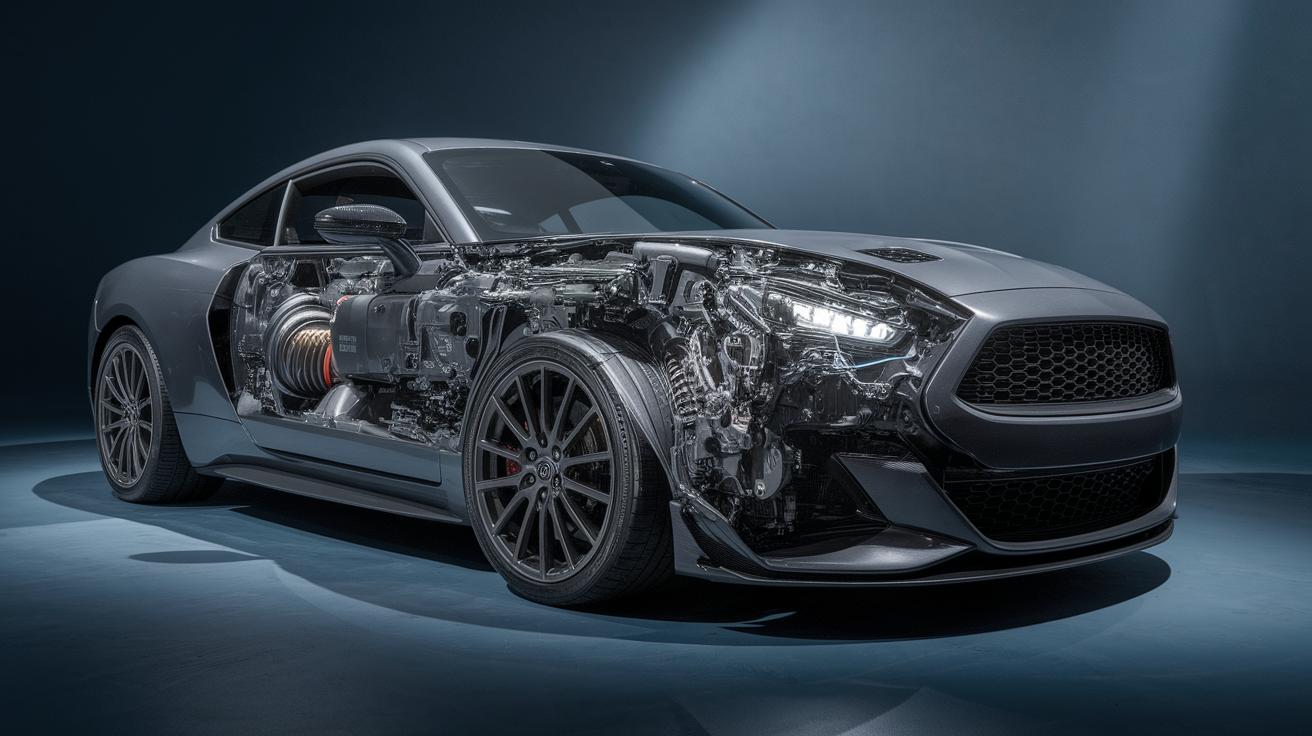How to Detail a Car Like a Professional
Detailing the interior of your car can be a therapeutic endeavor that transforms your driving experience. More than just a cosmetic upgrade, a clean car interior can enhance your comfort and increase the value of your vehicle. This guide will walk you through the step-by-step process of interior car detailing as practiced by professionals. From selecting the right tools and cleaning agents to tackling stubborn stains and protecting surfaces, we’ve got every aspect covered. Whether you’re doing this for personal satisfaction or to prep your car for resale, our guide will elevate your car detailing skills to the next level.
A Complete Guide: Car Interior Detailing and Cleaning
Why a Clean Car Interior Matters
A clean car interior isn’t just about aesthetics; it’s about creating a comfortable and healthy environment. Dust, allergens, and germs can build up over time, posing health risks, especially for those with respiratory conditions. Regular cleaning of your car’s interior minimizes these risks, ensuring a safer ride for you and your passengers.
Furthermore, maintaining a clean interior can preserve your vehicle’s resale value. Dirty interiors can lead to material degradation over time, impacting the overall appeal of your car when it’s time to sell or trade-in. Thus, taking the time to detail your car is both a proactive and protective measure.
What You’ll Need for an Interior Detail
Having the right tools and products can make a world of difference in car interior detailing. Key items include a versatile vacuum cleaner with crevice tools, microfiber cloths, soft-bristled brushes, interior cleaner, glass cleaner, and surface protectant. Optional extras like a steam cleaner or air compressor can also prove invaluable for more intensive cleaning jobs.
The choice of cleaning agents should match the material in your car, such as leather cleaner and conditioner for leather seats or a foaming fabric cleaner for cloth upholstery. Equipping yourself with the right tools and products ensures you achieve a professional finish without damaging the interior surfaces.
What is the best thing to use to detail the inside of a car?
The ideal cleaning agent depends on the surfaces you’re addressing. For general cleaning, an all-purpose interior cleaner that suits both plastics and fabrics is a good starting point. For specific materials, choose products specially formulated for those surfaces—such as leather conditioner for leather surfaces or a non-greasy protectant for dashboards and plastic parts.
Additionally, employing quality microfiber cloths for wiping down surfaces ensures minimal scratching and efficient cleaning. These cloths excel in picking up dust particles and can be easily washed and reused. For a comprehensive clean, a handheld vacuum with a variety of attachments helps access tight corners and under seats where dirt accumulates.
The Process: How to Clean the Interior of Your Car Like the Pros
Before You Begin
Before diving into the cleaning process, remove all personal items and trash from the car to ensure you have access to all areas. Check for any particularly delicate items or components that might require special attention during the cleaning process, such as aftermarket audio equipment or custom interiors.
Prepare your workstation by gathering all necessary cleaning supplies and tools. Doing so minimizes interruptions in your process and makes it easier to execute each step proficiently, allowing you to maintain focus and efficiency.
1. Vacuum Large Debris
Start by vacuuming the interior to remove large debris and dust. This includes the seats, floorboards, and trunk area. Use the crevice tool to get into tight spaces and the brush attachment for delicate surfaces, such as fabric seats and headliners.
A strong and versatile vacuum is essential for effectively removing all dirt and debris. Proper vacuuming lays the foundation for deeper cleaning, ensuring that subsequent steps like spot cleaning are more effective.
2. Clean and Hang Floor Mats
Remove the floor mats and clean them outside of the vehicle. If they’re rubber, use a hose and all-purpose cleaner to scrub them. For carpeted mats, a thorough vacuuming followed by a spot treatment of any visible stains may be necessary.
Let the mats dry in a sunny spot while you continue with the rest of the cleaning. Drying them thoroughly prevents mold and mildew growth, and hanging them lets water drip off completely.
3. Clean Hard Plastic Surfaces
Next, tackle the hard plastic surfaces inside the car, such as the dashboard, center console, and door panels. Use a soft-bristled brush to loosen dirt in textured areas and follow with a microfiber cloth to wipe away the dirt.
Using an appropriate interior cleaner prevents streaking and helps maintain a smooth, even finish. Pay attention to areas such as cup holders and air vents where grime can accumulate unnoticed.
4. Protect Hard Plastic Surfaces
After cleaning, apply a protectant to hard plastic surfaces to preserve their appearance and protect against UV damage. Ensure the product you choose is non-greasy yet offers long-term protection against cracks and fading.
This step is crucial not only for aesthetic purposes but also for prolonging the lifespan of your car’s interior materials. UV rays can be particularly harsh, and a good protectant will combat their long-term effects.
5. Clean Leather Surfaces
For leather seats and surfaces, use a leather cleaner applied with a microfiber cloth or a soft-bristled brush. Gently scrub the surfaces to lift dirt and grease built up from hands and clothing.
Always test cleaners on a small, inconspicuous area initially to ensure that there’s no adverse reaction with the leather. Clean leather not only looks better but also feels more comfortable and luxurious.
6. Condition and Protect Leather Surfaces
Once cleaned, apply a high-quality leather conditioner to keep the material supple and to prevent it from cracking. Use a different microfiber cloth to apply the conditioner evenly, paying special attention to seams and areas exposed to direct sunlight.
The conditioning step is essential for leather maintenance. Not only does it add to the longevity of the material, but it also enhances the overall luxury experience of car interiors.
7. Spot Clean Stubborn Stains
Tackle stubborn stains by applying a specialized carpet or fabric cleaner. Use a soft brush to work the cleaner into the fibers, loosening the stains without damaging the fabric.
Be patient: stubborn stains might require multiple treatment rounds. It’s important not to oversaturate the fabric, as this might lead to mold growth if not dried completely and efficiently.
8. Clean Carpet and Upholstery
Deep cleaning the carpet and upholstery is key to a thorough detail. Use a carpet cleaner to extract embedded dirt, applying it with a spray nozzle and removing it with a vacuum or extractor.
The clean carpet improves the vehicle’s interior appearance and air quality. It’s a transformative step that significantly boosts the freshness inside your car.
9. Deodorize Your Cabin
Eliminate any lingering odors by using a car-safe deodorizer, or try natural alternatives like baking soda. Avoid strong, perfume-like scents; aim for a neutral smell enhancing the car’s natural freshness.
Regular maintenance with air-conditioning refreshers or cabin filters can also help in maintaining a pleasant atmosphere within your vehicle, ensuring it always smells like new.
10. Clean Your Windows
The final step is to clean the windows, both inside and out, using a streak-free glass cleaner. Apply the cleaner with a microfiber cloth, ensuring all residue is removed for clear visibility.
Clean windows not only enhance your vehicle’s appearance but are crucial for safe driving. Ensure glass intense glare and distraction by leaving windows spotless and unobstructed.
Key Takeaways: Interior Detailing is About More than Aesthetics
Detailing goes beyond just making a car look good; it preserves the vehicle’s value, enhances the driving experience, and contributes to the occupant’s health. Frequent cleaning prevents long-term wear and tear, promotes safety by keeping windows clean, and ensures a healthier environment by reducing allergens and germs in your car.
By following professional detailing steps, you ensure that every ride offers the optimum comfort and satisfaction that a meticulously maintained car interior can provide. Prioritizing both aesthetics and protection creates and maintains a luxurious, comfortable driving environment.









